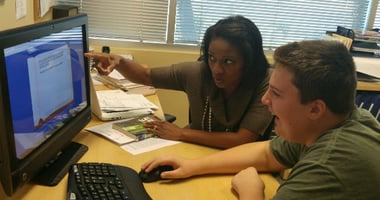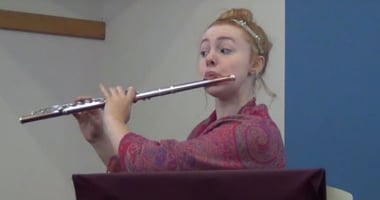In a world that values high achievement and accomplishment while viewing procrastination as a...
How Environment Facilitates Learning
The physical learning environment makes a difference in the student’s ability to focus and learn. It’s not just that schools strive to provide a quiet and orderly setting; sometimes there are other less obvious factors that can play a role in a student’s comfort level at school and his or her ability to focus on instruction.
Appropriate-Sized Furniture
Students come in all different sizes, and regardless of age, the furniture needs to be an appropriate fit. Sometimes a student is much taller than their cohort and may need a larger desk. A very small student may end up in a chair that doesn’t allow their feet to touch the floor. While students don’t often complain of aches and pains like adults might, compensating for the wrong size of furniture does cause unnecessary strain and can fatigue students, compromising their ability to focus on instruction.
Customized Accessories and Equipment
It’s not just the furniture that can cause additional stress to a student who is significantly larger or smaller than their peers. Other equipment can pose a problem, particularly for career and technical classes, fine arts, and athletics. Laptops can be ordered with oversized keyboards to minimize mistakes from trying to type on keys that are too close together. Platforms can help raise students up when they are using machinery or other equipment where the user typically stands to operate it, like many of the wood shop machines. Students with different physical needs can be taught how the proper-sized furniture and equipment can improve their focus and performance, and coached to ask for accommodations that will put them at the same baseline as their peers.
One of the most common but often-overlooked student need is customized equipment and accessories to accommodate left-handed students. Beyond scissors, left-handed students may struggle with rulers and protractors that they can’t read when they position on their paper. In the kitchen and science lab, measuring cups and beakers are often calibrated so that someone holding the item in their left hand can’t read the numbers or clearly see the lines without twisting around or shifting to their right hand. Helping a left-handed student get appropriate equipment or understand adjustments they will need to make can minimize frustration.
Minimize Visual Distractions
Some students have a hard time filtering out what’s important and what’s not. For these students, being in a classroom with lots of bulletin boards, posters, and other colorful wall decorations can become challenging. The student may not even be aware of why they have such a hard time focusing, so teachers should become mindful of potential distractions. Some have successful dedicated a “thinking corner” or other low stimulus area for students to self-select to sit in when they have a particularly taxing assignment and want to ensure that nothing distracts them.
Minimize Auditory Distractions
Sounds both inside and out of the classroom can have the negative impact of pulling attention away from the teacher. The classroom doesn’t have to be positioned next to the marching band’s practice hall to distract; some students have such sensitivity to sound that they are quickly flooded with common background noises, such as a buzzing light bulb or an electric pencil sharpener that’s often in use. Potential remedies include allowing a student to wear noise-cancelling headphones when working quietly or to listen to low levels of ambient sounds or music. Some teachers wear amplifying microphones, which not only helps students to separate the teacher’s instruction from background noise, but also becomes a signal of when to focus and when the student can work more independently.
Distinguish Between Spaces for Learning and Relaxing
Schools that provide a designated area for students to relax can be marked with bean bag chairs, tall tables with stools or comfortable places for students to stand, and couches. This type of furniture signals a more relaxed expectation of student behavior where students can talk to each other, listen to music in headphones, and in some cases, use cell phones, and also clearly defines that such activities are not acceptable in the structured learning environment.
As homework is an expectation of most education programs, many schools also provide a structured space for students to complete homework before leaving school. In addition to having well maintained computers and printers, the space is generally quiet and helps students to finish their required assignments before moving to a non-academic setting.
Adult Presence
The role of teachers in providing instruction is clear, but these adult role models also instill a sense of security and safety for students who need this reassurance. Beyond those students who have been bullied in previous settings, many students experience anxiety and discomfort when they are uncertain what to do. This is especially magnified during less-structured times such as lunch, passing zones, and social activities like pep rallies that may be incorporated into a school day. High adult presence in a school helps ensure that students can be quickly redirected as needed. Students who benefit from more structure can request a designated adult mentor, providing a place to go when feeling overwhelmed in other settings and a quieter option for eating lunch.
Setting Students up for Success
Teachers and administrators are aware there are many different learning styles of their students and strive to provide a variety of instructional methods to meet the academic needs of students. Equally important is understanding the physical needs that students have, and creating an environment that accommodates all sizes of learners and facilitates attention to instruction.




